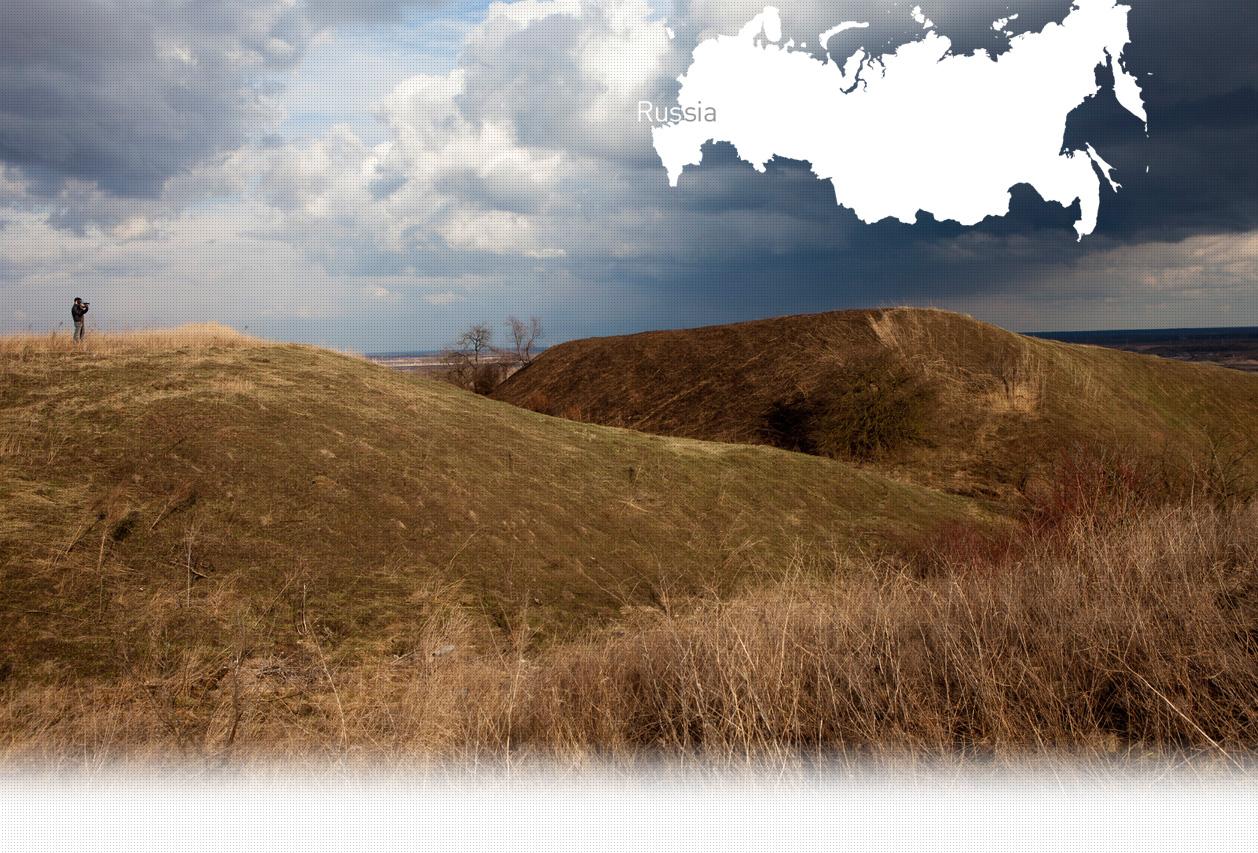

1 Killing site(s)
Yulia Sh., born in 1931: “Some prisoners of war were brought here from Stalingrad. There was another camp located not far away, near the hamlet of Yerikovskiy. We used to come to the camp here to throw some bread for the prisoners. We made friends with one of the guards, who was a prisoner himself. His name was Vania. He allowed us to bring food and some cigarettes for the prisoners. There were four barracks in the camp’s territory. The barracks were built by the prisoners themselves. The female prisoners were separated from the male prisoners; they stayed in a separate barrack. I used to go there every day until the day when our neighbor denounced us. She said that we were communists, so we had to flee to another village for a while.” (Witness n°862R, interviewed in Dubovskoye, on November 16, 2018)
“In the beginning of August 1942, the German invaders occupied the Dubrovskoye district. In the second part of August the captured [Soviet] soldiers and officers were brought by Germans here and confined into the camp created for this purpose in the territory of the kolkhoz’s milk house named after Karl Marx. At the beginning a small plot was fenced in with barbed wire that was enlarged later. In the north, the camp included the part of the pond that was also fenced in with barbed wire; in the south – it spread far behind the buildings of the milk house. The camp’s territory was about 2 km². Later, they started the construction of the buildings; the majority of which were long barracks. They were prisoners of war who built [the buildings]. They were forced to perform heavy work, to carry all the material on their backs. For example, they transported weeds from about 7-10 km away, the cob bricks from about 3-4 km away and dried grass that they used for the heating. In the hamlet of Baranschikovksaya, located 12km away, Germans destroyed a school and some other buildings. They forced the prisoners to transport the rubble on their backs.[…]” [Act N) 85 drawn up by Soviet Extraordinary Commission (ChGK) on March 26, 1943; GARF : Fond 7021, Opis 40, Delo 4]
Dubovskoye is located on the banks of the Sal River 300km (190mi) north east of Rostov-on-Don. The village was founded in 1786, when Cossack captain, Alexandr Dubovskov, was granted possession of the lands in this area and settled down here. According to the 1897 census, 312 people lived in Dubovskoye. They were either Russians or Cossacks. There is no any record about the Jews living in the village before the war. By 1915, the population increased up to 1,129 people. There was a parish school, two steam-oil mills, two flour mills and a soap factory.
Dubovskoye was occupied by the German troops in early August 1942. Before the German arrival many Jewish and non-Jewish refugees passed by the village. During the bombings of the railroads, before the occupation, a hundred of the evacuees died. Those Jews, the exact number is unknown, who didn’t have time to evacuate further to the East, were arrested and shot by Germans in a ditch near the railroads. According to the local resident interviewed by Yahad, one Jewish girl, Masha, was hidden and saved while her parents were shot along with other Jews.
In mid-August 1942, a camp for Soviet POWs was created in the territory of the collective farm’s milk house. Soon, the territory was enlarged and fenced in with barbed wire. In all, about 12,000 Soviet soldiers and officers were detained in the camp. The prisoners built the barracks in which they slept. During the day the detainees were forced to perform different kinds of heavy labor. Due to lack of food, drinking water and horrible living conditions, over 5,000 prisoners died during the existence of the camp. The camp was liberated in January 1943.
Do you have additional information regarding a village that you would like to share with Yahad ?
Please contact us at contact@yahadinunum.org
or by calling Yahad – In Unum at +33 (0) 1 53 20 13 17